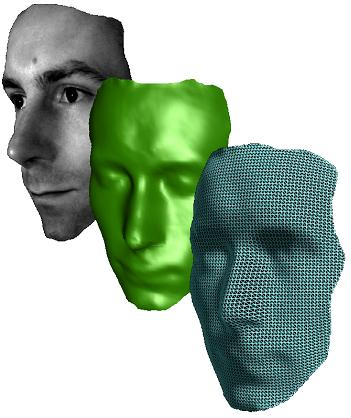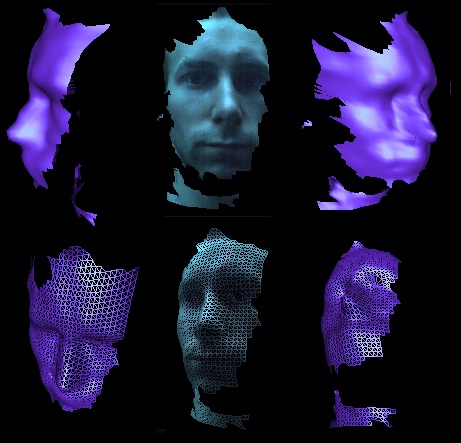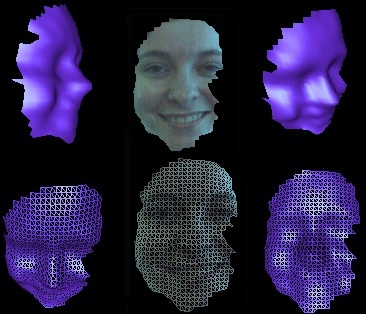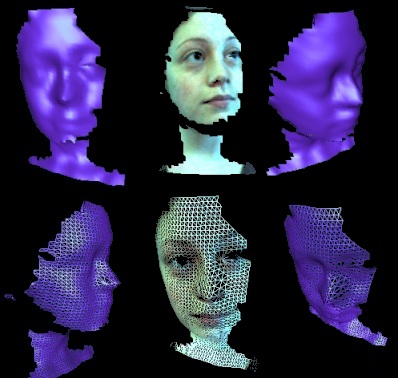

|
3D Face Recognition We have developed a 3D Face Recognition system, which uses the three-dimensional geometric structure of human faces to perform identification and verification, regardless of facial orientation and lighting conditions. |
 |
Despite significant advances in face recognition technology, it has yet to be put to wide use in commerce or industry, primarily because the error rates of existing face recognition systems are too high for many of the applications in mind. The reasons for these high error rates stem from a number of sub-problems.
Face recognition systems are highly sensitive to the environmental circumstances under which the images being compared are captured. In particular, changes in lighting conditions can increase both false rejection rates (FRR) and false acceptance rates (FAR).
Another problem is associated with facial orientation and angle of image capture. When standard 2D intensity images are used, in order to achieve low error rates, it is necessary to maintain a consistent facial orientation (preferably a frontal parallel perspective) for both the query image and gallery image. Even small changes in facial orientation can reduce the effectiveness of the system.
This situation is
worsened by the fact that people’s facial expressions can change from one
image to another, increasing the chance of a false rejection.
The result is that in order to produce secure site access systems, it
is necessary to specify a required facial expression (usually neutral).
However, this approach then removes one of the key advantages of face
recognition i.e. no need for subject co-operation, rendering such a system
unsuitable for surveillance applications.
We suggest that three-dimensional facial surface data could be used to combat the problems mentioned above. Firstly, appearance based methods (using two-dimensional intensity data) are more susceptible to lighting conditions, than feature based methods (taken from three-dimensional geometric data). The problem of facial orientation can also be compensated for, as the facial surface can be rotated in three-dimensional space, such that the orientation of the query model matches that of the gallery model. The additional geometrical measurements, together with the colour and texture data, are sufficiently information rich to allow variability in facial expression, while still maintaining a low false acceptance rate.
Until recently, methods of 3D capture have usually required the use of laser scanning equipment. Such equipment, although highly accurate, is not suitable for some of the application scenarios in mind. Firstly, laser scanning may damage the eye, plus a scan can take several seconds to complete, requiring the subject to remain perfectly still during this time. For these reasons three-dimensional face recognition has remained relatively unexplored. The research that has been carried out has had to rely on a very limited amount of facial surface data or used a single generic facial surface to enhance existing two-dimensional approaches. Other systems attempt to extract 3D structure information from 2D images using shape from shading approaches. However, the emergence of new 3D capture devices, has allowed development of true 3D face recognition.
Below are three examples of the 3D facial surface data stored in our 3D Face Database, captured in various lighting conditions, with and without texture mapping.



The next stage in our research requires the expansion of our current 3D face data to include a much larger test set. Several departments at the University of York, together with external collaboration, are currently involved in a large-scale data acquisition project, populating a 3D Face Database with facial models captured under a much wider variety of conditions. This new database is intended to provided a platform for testing 3D face recognition systems on a scale to match those carried out on the 2D FERET (Face Recognition Technology) database in the FRVT (Face Recognition Vendor Tests).